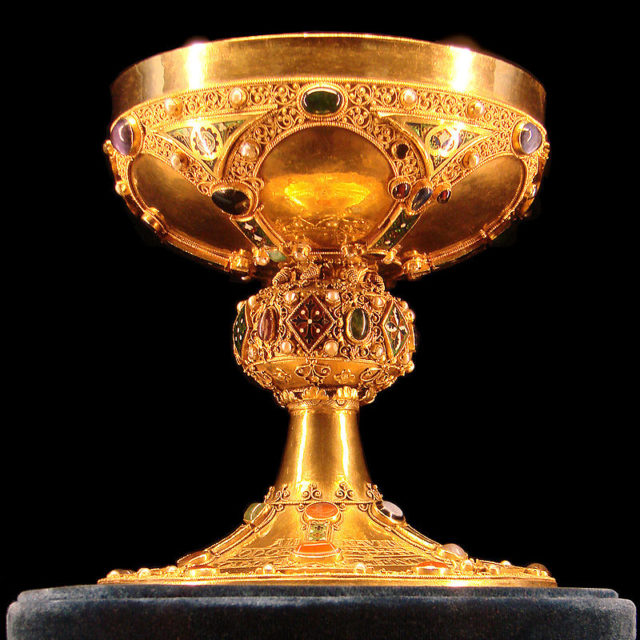The chalice glass is a footed cup or goblet which holds a prime position among sacred vessels.
It was often used during religious ceremonies, and it has a symbolic meaning in many countries.Vessels of this kind were precious items of ritual worship in the early church, and because of this, they were often highly decorated with jewels, and some were richly enameled. Many early examples have a large bowl and two handles. Over time, the base became more important, and the size of the bowl was made smaller for better stability.
Throughout history, there were goblets made entirely of gold, and they were symbols of family and tradition. The chalices found in Roman Catholicism were made in a tulip shape, with the cups being richly decorated.


When Roman Catholic priests were ordained, they often received this kind of goblet as a gift from their families. The chalices found in Eastern Christianity were engraved with symbolic forms and significant icons or a cross. In medieval times, a chalice was handed to a deacon during the ceremony of his ordination in honor of his ministry.
The chalice is one of the most sacred pieces in Christian liturgical worship and is always blessed before use. However, once a chalice has been blessed in both the East and West churches, it can be touched only by priest, deacon or bishop.
In Christian tradition, it is the most respected vessel because Jesus used it at the Last Supper to serve wine. One of the best stories which have the chalice at its center is that of the Holy Grail.
According to legend, the cup was used by Jesus to institute the Mass at the Last Supper. Another legend talks of Joseph of Arimathea who used the cup to collect the blood of Jesus after the Crucifixion. The Unitarian Universalists lit a flame inside the chalice which is their most widely used symbol and their official logo. There is a term connected to this sacred glass known as the “poisoned chalice”.
This term is applied to a situation which at first it appears to be good, but later it becomes really bad. The idea of the term came from Benedict of Nursia in one of his many exorcisms and was found on one of his medals where he talks to Satan to drink the poison himself after he tempts him with his vanities. The term was also used in Shakespeare’s Macbeth in the scene where he is thinking of the consequences after the murder that he is plotting.
It is also used in some forms of Neopaganism during rituals where it may be placed on the altar and often contains wine, water, or other liquids. It is really interesting to note that in the Rastafarian tradition, the chalice is used for placing ganja in and whoever smokes ganja from the cup has to be very mature and clean-spirited.
It also used as a heraldic device in many cities and regions of the world. In the Czech Republic, in the Kingdom of Bohemia, the chalice was used not only as a religious object but also as their unofficial national symbols.
On the Balkans, there is a word šalica used in Serbia and Croatia which means a glass cup. Today, the form of the historic chalice has changed and is often used as an elegant beer glass, and it is familiar as a glass for ice cream.

